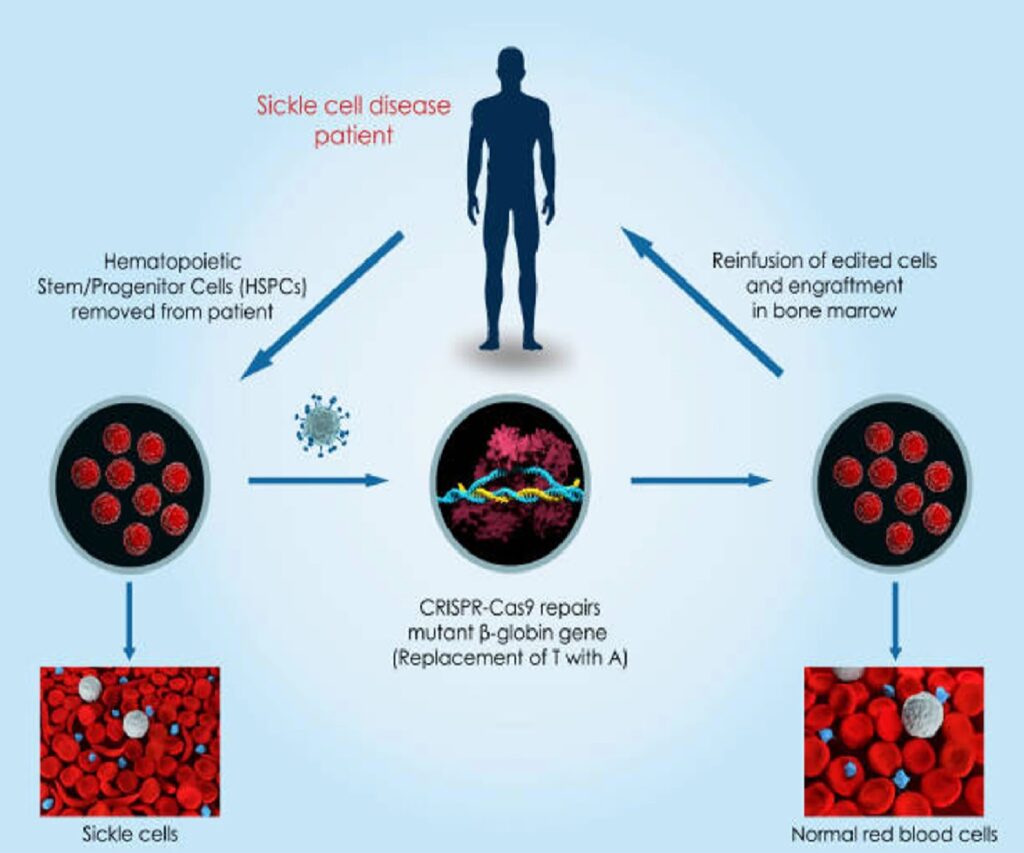Summary
Victoria Gray’s grandmother knew something was wrong as early as 3 months old when giving her a bath and her crying as if she was in immense pain. It was the start of many horrible pain episodes Victoria would have to face into her 30’s. She was diagnosed with sickle cell disease and at 34, she volunteered to be the first patient in the U.S. with a genetic disease to be treated with a gene editing technique called CRISPR. “You can’t walk or lift up a spoon,” Victoria states when describing what a day is like in her life. She was never able to have a normal childhood. Prone to constant infections and being incredibly weak from the anemia or the blood transfusions she had to endure. She went to school to pursue being a nurse and had to drop out. This disease had hold of her life completely. “It’s horrible knowing I could have a heart attack or stroke at any time.” This treatment could change everything.
Description
What is sickle cell disease? To put simply, it’s a red blood cell disorder. A normal cell is round in shape but a person with sickle cell disease has red blood cells that are crescent shaped. They are hard, sticky, and die quickly. They clog blood flow which can lead to severe pain or a stroke. Other symptoms include pooling in the spleen (which causes permanent organ damage), acute chest syndrome which feels like pneumonia, organ disease, enlarged heart, kidney disease, and even damages to the retina that can lead to vision problems or loss of vision. It affects African Americans more than anyone else, and it is also a generic trait that is passed to a person by their parents. When both parents have a sickle cell trait, they have a 1 in 4 chance of having a child with sickle cell disease with each pregnancy.

The cure for sickle cell disease is very risky and there are multiple types of SCD. Some are milder than others. For people like Victoria, it is often debilitating and prevents people from having a “normal” life. There are various medications to prevent pain episodes, doctors suggest vaccines to prevent illness, blood transfusions to increase red blood cells, or even stem cell transplants (which is risky, involves long recoveries, and even the body rejecting the stem cells.) With many people not being able to live beyond middle age, Victoria was excited at the chance to try a new treatment her doctor told her about. The treatment? CRISPR.

CRISPR (Clustered Regulatory Interspaced Short Palindromic Repeats), edits genes. The goal is to turn on the production of fetal hemoglobin, a main oxygen carrier. By introducing the FH into the body, the hope is to develop healthier red blood cells so oxygen can travel throughout the body correctly. This treatment is also giving doctors a better insight to fighting AIDS and cancer. The process included Victoria first having bone marrow cells removed from her body. They are then sent to a lab to be edited. Similar to the process of stem cell transplants, she undergoes chemotherapy. This will help to make room in the bone marrow for her edited cells, which are then injected back into the body. Being that this treatment is experimental and still being studied, there are skeptics.
CRISPR is not a cure for sickle cell, but doctors are hopeful it will assist with the preventing of complications the disease brings. Victoria remained hopeful that this could be the answer she’s looking for. Months after recovery her bloodwork indicated that nearly half of the hemoglobin is fetal hemoglobin. She hadn’t had pain attacks where she was sent to the hospital or any blood transfusions. After two years, she states she is “doing great.” Doctors have even began treating others. Out of 45 patients, 22 have had success for far. So while this treatment is still in its early workings and still awaiting FDA approval, Victoria has been able to do something she hasn’t done before…live a normal life.
News Articles
https://www.npr.org/transcripts/1071067052
This article discusses the future of CRISPR treatment. Jennifer Doudna discusses how we could use this method to change less desirable properties in the human body.
https://www.npr.org/2022/01/13/1072879005/hospitals-in-urgent-need-blood-donations-blood-crisis
National blood shortages on the rise due to COVID-19 and winter weather. This can pose a huge problem for people with sickle cell who rely on blood transfusions. Doctors are having to make big decisions on who receives blood and who doesn’t.
Most cases of sickle cell disease is found in Africa. This article discusses the alarming rate of cases found, teaching awareness, and the progress of treating the disease in a country which such alarming rates.
References
“The story of Victoria Gray and her battle with sickle cell”
NPR.org
“The results of Victoria Gray and her treatment with CRISPR”
NPR.org
What is sickle cell disease?
CDC.gov
https://www.cdc.gov/ncbddd/sicklecell/facts.html
What is sickle cell disease (additional source information used)
hopkinsmedicine.org
https://www.hopkinsmedicine.org/health/conditions-and-diseases/sickle-cell-disease